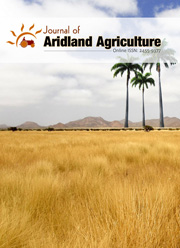Physiological and biochemical responses of Ceriops roxburghiana Arn. seedling under salt stress conditions
Abstract
Salt stress is one of the sternest ecological factors that reduces and confines expansion and improvement of plants. In the current exploration, the effect of different concentration of NaCl on growth and biomass accumulation, photosynthetic characteristics and biochemical determinations of Ceriops roxburghiana a mangrove
plant has been studied. The superior boundary for the continued existence of this species to NaCl salinity was 600 mM. Consequences of the current study indicated that the optimal salt concentration for the overall better performances of the seedlings of C. roxburghiana was 300 mM NaCl. The growth parameters such as shoot and
root length, fresh and dry weight increased with increasing salinity up to 300 mM NaCl. Sodium chloride salinity stimulated the chlorophyll and carotenoid content increased up to 300 mM NaCl concentration. The biochemical determinations such as amino acid and sugar decreased with increasing salinity up to the 300 mM levels and still at higher salinity levels and increased in the content of these two compounds was noticed. On the further hand, protein and starch contents were increased up to 300 mM NaCl and decreased at higher concentration. Proline and glycine betaine contents were randomized increased up to 600 mM NaCl.




 .
.